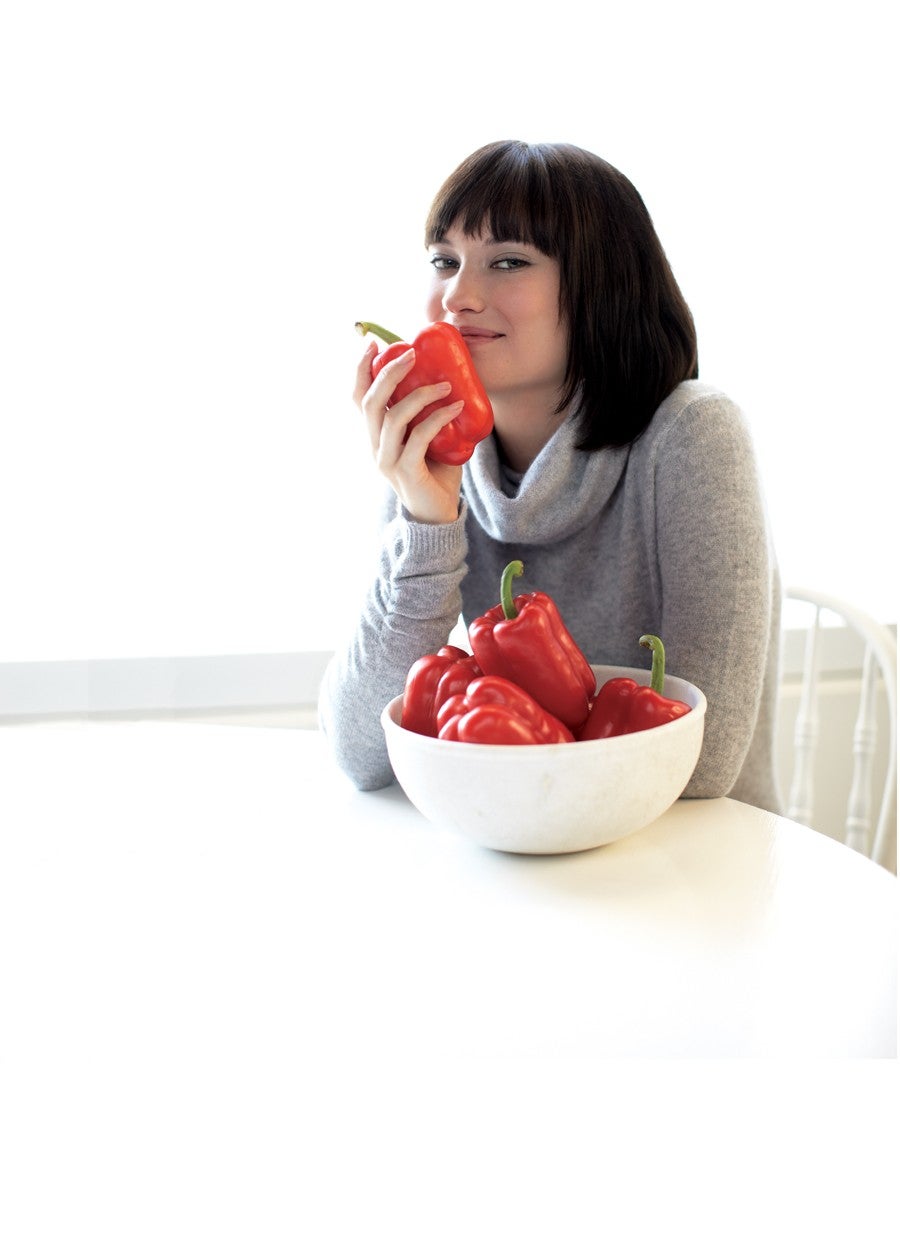Feel-Good Foods

Vegetarians are happier people, but don’t take our word for it. A study published in Nutrition Journal in June 2010 followed 138 Seventh Day Adventists in the Southwest, 60 of them vegetarians. This religious group is often studied because about half its membership follows a strict vegetarian diet.
The volunteers completed questionnaires about their daily eating habits and mood states, including levels of depression, anxiety, and stress. The result? The vegetarians scored significantly better on mood scales than their omnivorous peers.
Besides eschewing meat, what were they doing right? “They consumed generous plant sources of both omega types of essential fatty acids, such as nuts and seeds,” says the study’s lead researcher, Bonnie Beezhold, PhD, MHS, of Arizona State University. “Not consuming the long-chain omega-6 fats, which are abundant in animal flesh and compete with omega-3s in the body, may be a factor.”
It appears that what’s inside your mealsand the amountcan go a long way to keeping you on an even keel. Here’s a look at the top mood-boosting nutrients for vegetarians and where to get them, plus a collection of tasty recipes that keep the calories low and the feel-good factor high.
Omega-3s
When experts talk about mood-boosting brain foods, the omega-3 fatty acid docosahexaenoic acid (DHA) is central to the conversation. Research has shown that depressed people have lower levels of this omega-3 fatty acid in the blood and brain, says Elizabeth Somer, MA, RD, author of Eat Your Way to Happiness.
Because DHA is found mostly in fish or fish oil, vegetarians rely on alpha-linolenic acid (ALA), the omega-3 in plant foods, which the body converts to DHA. To get enough ALA to convert into optimal quantities of DHA, vegetarians should aim for 1,800 to 4,400 milligrams daily.
SERVE IT UP: A single teaspoon of flaxseed oil contains 2,400 milligrams ALA; 1/4 cup walnuts: 2,270 milligrams; 1 Tbs. canola oil: 1,200 milligrams. Soymilks and soy yogurts fortified with algae-derived DHA are also available.
Magnesium
An estimated 68 to 80 percent of Americans don’t get the recommended 400-milligram daily value (DV) of magnesium. This mineral supports a healthy nervous system, and low levels can exacerbate common symptoms of depression, such as anxiety, confusion, and low energy.
SERVE IT UP: Boost magnesium with pumpkin seeds (a 2-ounce serving packs 45 percent of the DV) or deep-green leafy veggies such as spinach (1 cup provides nearly 40 percent of the DV).
Tryptophan
The amino acid tryptophan is a precursor to serotonin, sometimes called the feel-good neurotransmitter. “Serotonin regulates nerve function, and low levels can trigger disorders like depression and anxiety,” says Somer. Tryptophan is found in such protein-rich foods as tofu, milk, and cheese, but the protein in these foods can block tryptophan from entering the brain. Your body banks the tryptophan, and needs a modest dose of carbs (no more than 30 grams) to activate serotonin production.
SERVE IT UP: Good sources of bankable tryptophan include 4 ounces of tofu or 1 ounce of mozzarella cheese. To rev up your body’s serotonin production, dig into a small serving of pure carbs, such as 1/2 cup of cooked whole-grain pasta, brown rice, or bulgur wheat.
Folic Acid
Also called folate or folacin, folic acid is a B-complex vitamin known as the baby vitamin because it helps prevent birth defects. But it may also influence how often you experience good moods. A 2008 study in Public Health Nutrition found high concentrations of folate were associated with less negative mood in 58 healthy men ages 19 to 47. How folic acid creates happy feelings is layered: it is active in producing neurotransmitters, such as serotonin, and also helps reduce blood levels of homocysteine, too much of which can damage brain cells.
SERVE IT UP: You can get 45 percent of the DV of folic acid (400 micrograms) from just 1/2 cup of cooked lentils and 33 percent of the DV from 1/2 cup cooked asparagus or spinach.
Vitamins C and E
When free radicals go unchecked, they can accelerate brain aging and dementia, says Somer. “Antioxidants neutralize free radicals that otherwise would pierce delicate membranes in the brain and cause cell damage,” she says. You can’t stop free radical damageit’s a natural processbut you can lessen the effects by keeping your body well supplied with antioxidants such as vitamins C and E.
SERVE IT UP: Your choices go well beyond the orange tree. For instance, 1 cup of chopped red bell peppers offers a whopping 291 percent of the DV of vitamin C. (An orange has just 116 percent of the DV.) Even 1 cup of strawberries has more C than an orange. For a vitamin C and E combo, go green with 1 cup of spinach or mustard or collard greens.